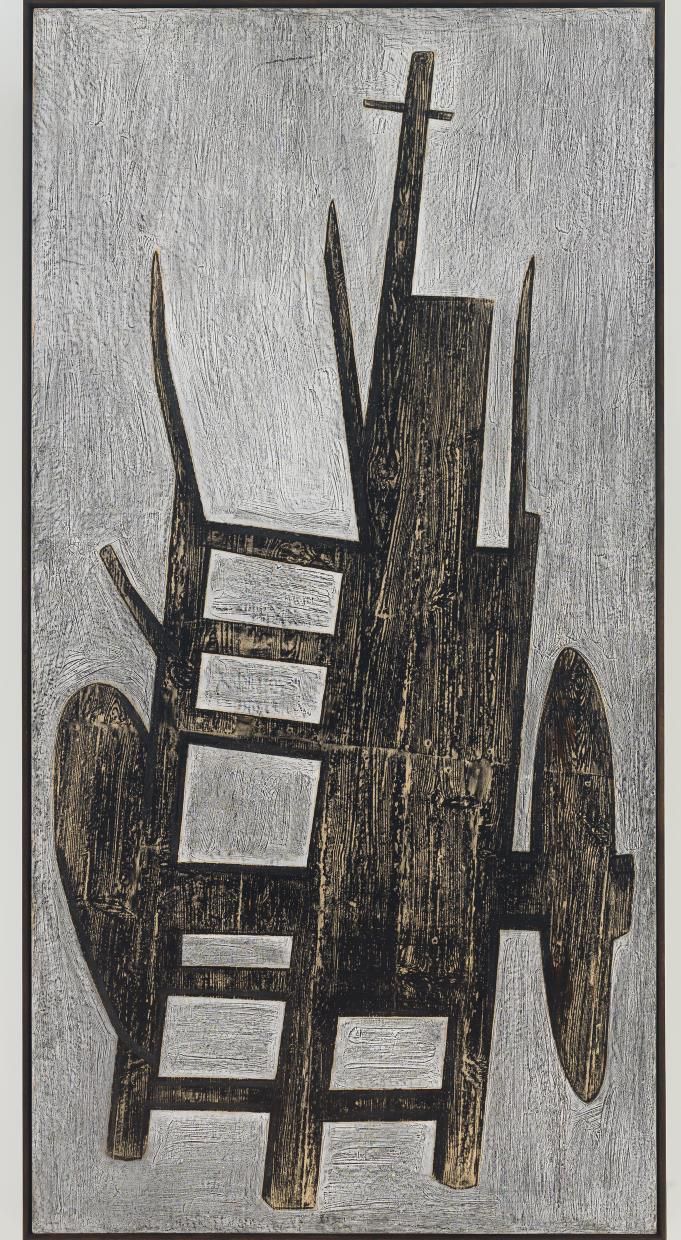The online collection and picture sale

Cart – 86/11
Ibarrola, Agustín
Bilbao, 18/08/1930
Wax on paper stuck to board
298.3 x 149.9 cm
1975
Last quarter of the 20th century
86/11
Acquired in 1986
The depiction of social issues in the works of Agustín Ibarrola spanned an extensive period of time between the mid-1950s and the late 1970s within his creative career. Compared to the abstract forays of many of his contemporaries, which shaped the process of stylistic renewal of what was called the Basque School, Ibarrola's paintings remained faithful to the realistic tradition during this period. This came from his political activism, as it was the only possible style that could generate images that are committed to reality. Within the Basque Country, art, just like songs, films or theatre, served the purpose of conveying political messages that were censured or directly banned by other means of expression.
Cart falls within this context. It is a work in which the sole focal point is an element from popular culture. The unique take on it suggested by the artist lies in the transformation of something apparently anodyne into an icon inserted within the forms of representation of "high culture". The use of the large format accentuates the transgression by conferring the status of art on an apparently trivial object yet one that is capable of representing workers in the rural, peasant setting. The structurally flat treatment free of perspective removes it from its literality, stresses its symbolic nature and classifies it within an idealistic logic common to early 20th-century avant-garde art.
For a long period of time, the inclusion of social issues within Ibarrola's work dovetailed with his participation in the Estampa Popular de Bizkaia, an artistic creation project associated with grassroots culture and workplaces characterised by its explicitly anti-Franco stance which he started in 1962 along with Dionisio Blanco and María Francisca Dapena. However, throughout his career, his work combined this stance with experimental projects started in the 1950s with his relationship from Equipo 57 (between 1957 and 1962) and continuing over time with expressions approached from a wide range of artistic languages, combined with his interventions in public spaces and natural settings. [Juan Pablo Huércanos]
Selected bibliography
- Euskal artea eta artistak 60ko hamarkadan = Arte y Artistas Vascos en los años 60 [Cat. exp.]. Donostia-San Sebastián, Gipuzkoako Foru Aldundia = Diputación Foral de Gipuzkoa, 1995. p. 289.
- Viar, Javier. Historia del arte vasco : de la Guerra Civil a nuestros días, 1936-2016. Bilbao, Bilboko Arte Ederren Museoa-Museo de Bellas Artes de Bilbao, 2017. pp. 151-152, il.
- 110 Ans 110 Oeuvres [Cat. exp.]. Bilbao, Bilboko Arte Ederren Museoa-Museo de Bellas Artes de Bilbao, 2018. pp. 288-289, sin n° cat.
- 110 Años 110 Obras [Cat. exp.]. Bilbao, Bilboko Arte Ederren Museoa-Museo de Bellas Artes de Bilbao, 2018. pp. 288-289, sin n° cat.
- 110 Urte 110 Artelan [Cat. exp.]. Bilbao, Bilboko Arte Ederren Museoa-Museo de Bellas Artes de Bilbao, 2018. pp. 288-289, sin n° cat.
- 110 Years 110 Works [Cat. exp.]. Bilbao, Bilboko Arte Ederren Museoa-Museo de Bellas Artes de Bilbao, 2018. pp. 288-289, sin n° cat.
- Después del 68 : arte y prácticas artísticas en el País Vasco, 1968-2018 [Cat. exp.]. Bilbao, Bilboko Arte Ederren Museoa-Museo de Bellas Artes de Bilbao, 2018. p. 359.
